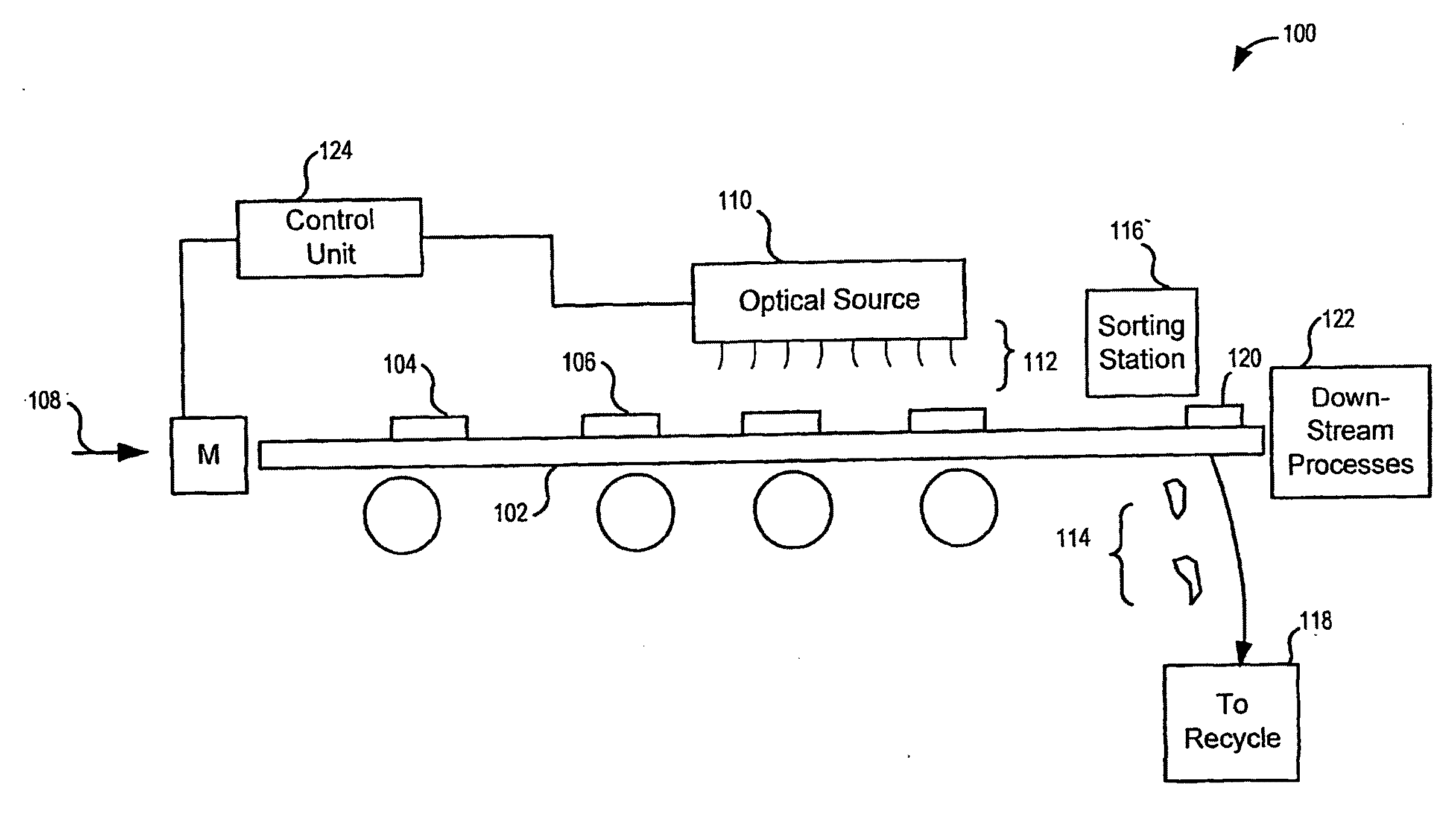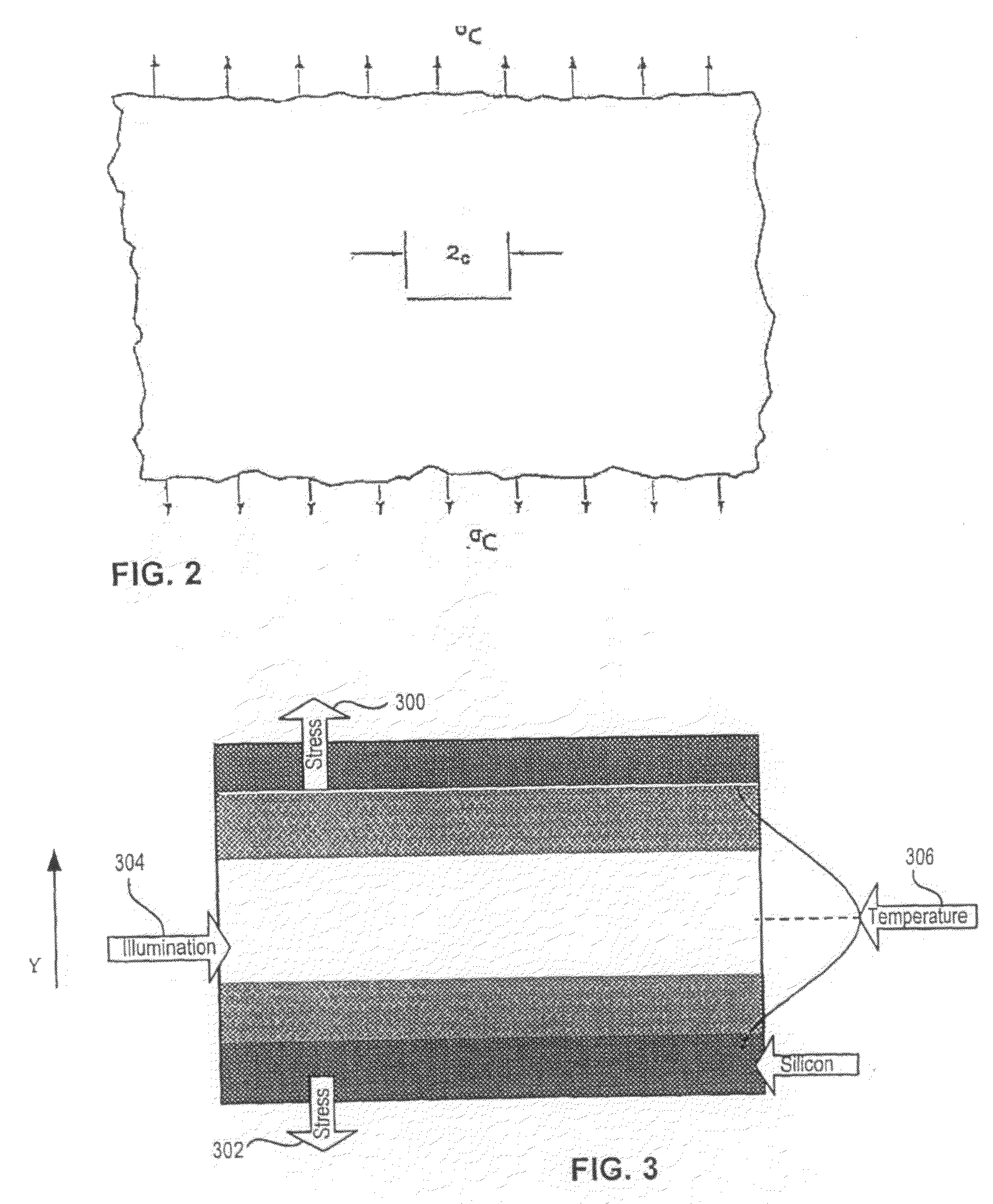Screening of Silicon Wafers Used in Photovoltaics
a technology of photovoltaics and silicon wafers, applied in the field of semiconductor/solid-state device testing/measurement, force measurement by measuring optical property variation, instruments, etc., can solve the problems of reducing the yield to unacceptable values, adding significant costs, and difficult manufacturing implementation
- Summary
- Abstract
- Description
- Claims
- Application Information
AI Technical Summary
Benefits of technology
Problems solved by technology
Method used
Image
Examples
example 1
[0076]The practical implementation of the above principles may easily be performed in a system consisting of a light source and a conveyor belt arrangement as shown in FIG. 8, which shows a schematic of a simple setup for isolating wafers likely to break during solar cell processing. Since the embodiment shown in FIG. 8 is representative of the system 100 shown in FIG. 1, like numbering of identical parts is designated by a “′”, such as system 100′ of FIG. 8.
[0077]The wafers are sequentially placed on a belt, which preferably supports the wafers at the edges. They are conveyed into a region which has a narrow illuminated zone. As the wafers pass under this illumination, each wafer acquires a temperature-distribution, which depends on the intensity pattern of the light, the size of the wafer, and the belt speed. This results in a predetermined thermal stress.
[0078]As a result of non-uniform heating, a stress distribution is induced in the wafer. The illumination pattern is chosen to ...
PUM
| Property | Measurement | Unit |
|---|---|---|
| thickness | aaaaa | aaaaa |
| defect size | aaaaa | aaaaa |
| temperature | aaaaa | aaaaa |
Abstract
Description
Claims
Application Information
 Login to View More
Login to View More - R&D
- Intellectual Property
- Life Sciences
- Materials
- Tech Scout
- Unparalleled Data Quality
- Higher Quality Content
- 60% Fewer Hallucinations
Browse by: Latest US Patents, China's latest patents, Technical Efficacy Thesaurus, Application Domain, Technology Topic, Popular Technical Reports.
© 2025 PatSnap. All rights reserved.Legal|Privacy policy|Modern Slavery Act Transparency Statement|Sitemap|About US| Contact US: help@patsnap.com



